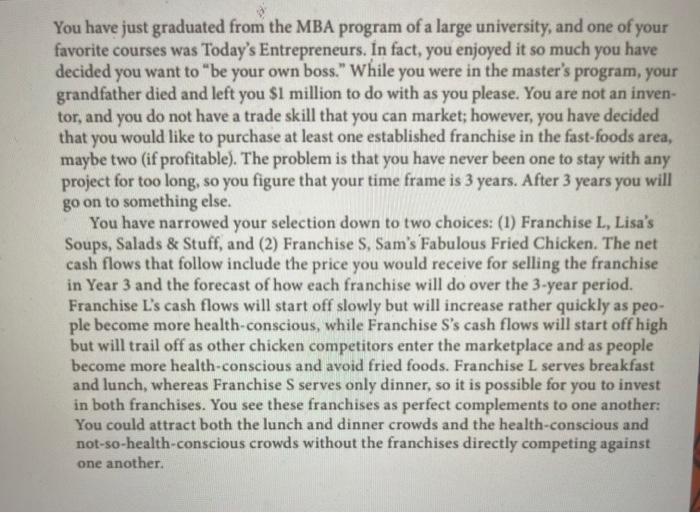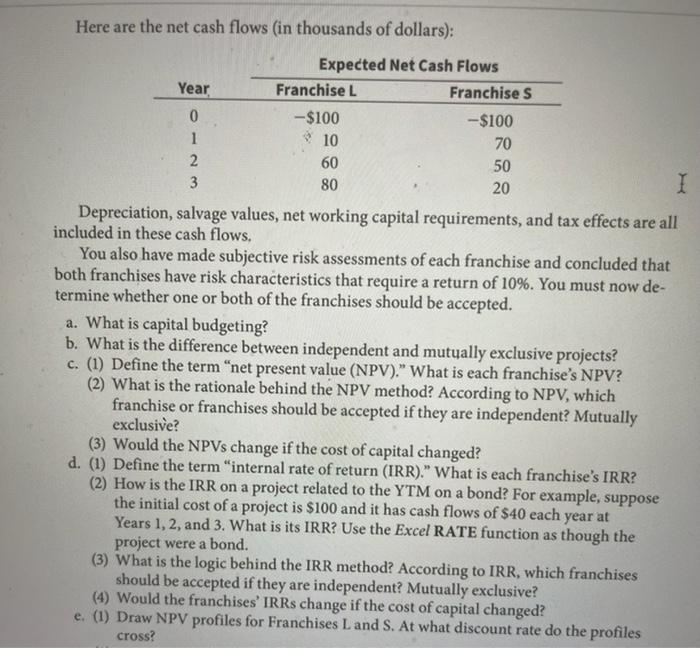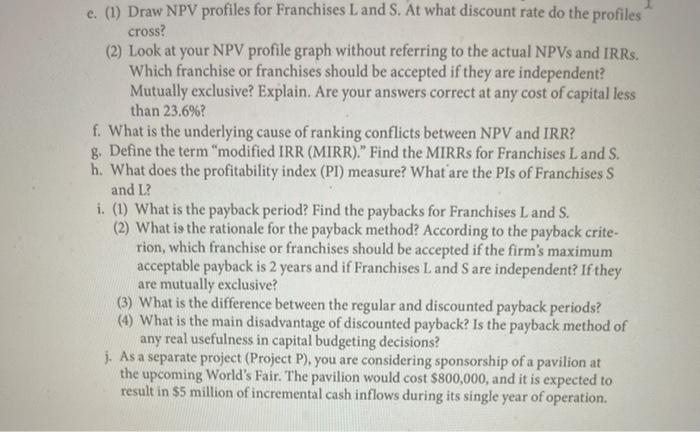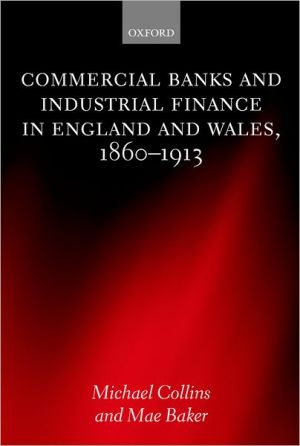Answered step by step
Verified Expert Solution
Question
1 Approved Answer
i already did A-C need help with the rest please?!?!?!?? You have just graduated from the MBA program of a large university, and one of
i already did A-C need help with the rest please?!?!?!?? 



You have just graduated from the MBA program of a large university, and one of your favorite courses was Today's Entrepreneurs. In fact, you enjoyed it so much you have decided you want to be your own boss." While you were in the master's program, your grandfather died and left you $1 million to do with as you please. You are not an inven- tor, and you do not have a trade skill that you can market; however, you have decided that you would like to purchase at least one established franchise in the fast-foods area, maybe two (if profitable). The problem is that you have never been one to stay with any project for too long, so you figure that your time frame is 3 years. After 3 years you will go on to something else. You have narrowed your selection down to two choices: (1) Franchise L, Lisa's Soups, Salads & Stuff, and (2) Franchise S, Sam's Fabulous Fried Chicken. The net cash flows that follow include the price you would receive for selling the franchise in Year 3 and the forecast of how each franchise will do over the 3-year period. Franchise L's cash flows will start off slowly but will increase rather quickly as peo- ple become more health-conscious, while Franchise S's cash flows will start off high but will trail off as other chicken competitors enter the marketplace and as people become more health-conscious and avoid fried foods. Franchise L serves breakfast and lunch, whereas Franchise S serves only dinner, so it is possible for you to invest in both franchises. You see these franchises as perfect complements to one another: You could attract both the lunch and dinner crowds and the health-conscious and not-so-health-conscious crowds without the franchises directly competing against one another. 10 Here are the net cash flows (in thousands of dollars): Expected Net Cash Flows Year Franchise L Franchise s 0 -$100 -$100 1 70 2 60 50 3 80 1 20 Depreciation, salvage values, net working capital requirements, and tax effects are all included in these cash flows. You also have made subjective risk assessments of each franchise and concluded that both franchises have risk characteristics that require a return of 10%. You must now de- termine whether one or both of the franchises should be accepted. a. What is capital budgeting? b. What is the difference between independent and mutually exclusive projects? c. (1) Define the term net present value (NPV)." What is each franchise's NPV? (2) What is the rationale behind the NPV method? According to NPV, which franchise or franchises should be accepted if they are independent? Mutually exclusive? (3) Would the NPVs change if the cost of capital changed? d. (1) Define the term "internal rate of return (IRR)." What is each franchise's IRR? (2) How is the IRR on a project related to the YTM on a bond? For example, suppose the initial cost of a project is $100 and it has cash flows of $40 each year at Years 1, 2, and 3. What is its IRR? Use the Excel RATE function as though the project were a bond. (3) What is the logic behind the IRR method? According to IRR, which franchises should be accepted if they are independent? Mutually exclusive? (4) Would the franchises' IRRs change if the cost of capital changed? e. (1) Draw NPV profiles for Franchises L and S. At what discount rate do the profiles cross? a e. (1) Draw NPV profiles for Franchises Land S. At what discount rate do the profiles cross? (2) Look at your NPV profile graph without referring to the actual NPVs and IRRs. Which franchise or franchises should be accepted if they are independent? Mutually exclusive? Explain. Are your answers correct at any cost of capital less than 23.6%? f. What is the underlying cause of ranking conflicts between NPV and IRR? g. Define the term "modified IRR (MIRR)." Find the MIRRs for Franchises Land S. h. What does the profitability index (PT) measure? What are the Pls of Franchises S and L? i. (1) What is the payback period? Find the paybacks for Franchises L and S. (2) What is the rationale for the payback method? According to the payback crite- rion, which franchise or franchises should be accepted if the firm's maximum acceptable payback is 2 years and if Franchises Land S are independent? If they are mutually exclusive? (3) What is the difference between the regular and discounted payback periods? (4) What is the main disadvantage of discounted payback? Is the payback method of any real usefulness in capital budgeting decisions? 1. As a separate project (Project P), you are considering sponsorship of a pavilion at the upcoming World's Fair. The pavilion would cost $800,000, and it is expected to result in $5 million of incremental cash inflows during its single year of operation. However, it would then take another year and $5 million of costs to demolish the site and return it to its original condition. Thus, Project P's expected net cash flows look like this in millions of dollars); Year Net Cash Flows 0 -$0.8 1 5.0 2 -5.0 The project is estimated to be of average risk, so its cost of capital is 10%. (1) What are normal and nonnormal cash flows? (2) What is Project P's NPV? What is its IRR? Its MIRR? (3) Draw Project P's NPV profile. Does Project Phave normal or nonnormal cash flows? Should this project be accepted? You have just graduated from the MBA program of a large university, and one of your favorite courses was Today's Entrepreneurs. In fact, you enjoyed it so much you have decided you want to be your own boss." While you were in the master's program, your grandfather died and left you $1 million to do with as you please. You are not an inven- tor, and you do not have a trade skill that you can market; however, you have decided that you would like to purchase at least one established franchise in the fast-foods area, maybe two (if profitable). The problem is that you have never been one to stay with any project for too long, so you figure that your time frame is 3 years. After 3 years you will go on to something else. You have narrowed your selection down to two choices: (1) Franchise L, Lisa's Soups, Salads & Stuff, and (2) Franchise S, Sam's Fabulous Fried Chicken. The net cash flows that follow include the price you would receive for selling the franchise in Year 3 and the forecast of how each franchise will do over the 3-year period. Franchise L's cash flows will start off slowly but will increase rather quickly as peo- ple become more health-conscious, while Franchise S's cash flows will start off high but will trail off as other chicken competitors enter the marketplace and as people become more health-conscious and avoid fried foods. Franchise L serves breakfast and lunch, whereas Franchise S serves only dinner, so it is possible for you to invest in both franchises. You see these franchises as perfect complements to one another: You could attract both the lunch and dinner crowds and the health-conscious and not-so-health-conscious crowds without the franchises directly competing against one another. 10 Here are the net cash flows (in thousands of dollars): Expected Net Cash Flows Year Franchise L Franchise s 0 -$100 -$100 1 70 2 60 50 3 80 1 20 Depreciation, salvage values, net working capital requirements, and tax effects are all included in these cash flows. You also have made subjective risk assessments of each franchise and concluded that both franchises have risk characteristics that require a return of 10%. You must now de- termine whether one or both of the franchises should be accepted. a. What is capital budgeting? b. What is the difference between independent and mutually exclusive projects? c. (1) Define the term net present value (NPV)." What is each franchise's NPV? (2) What is the rationale behind the NPV method? According to NPV, which franchise or franchises should be accepted if they are independent? Mutually exclusive? (3) Would the NPVs change if the cost of capital changed? d. (1) Define the term "internal rate of return (IRR)." What is each franchise's IRR? (2) How is the IRR on a project related to the YTM on a bond? For example, suppose the initial cost of a project is $100 and it has cash flows of $40 each year at Years 1, 2, and 3. What is its IRR? Use the Excel RATE function as though the project were a bond. (3) What is the logic behind the IRR method? According to IRR, which franchises should be accepted if they are independent? Mutually exclusive? (4) Would the franchises' IRRs change if the cost of capital changed? e. (1) Draw NPV profiles for Franchises L and S. At what discount rate do the profiles cross? a e. (1) Draw NPV profiles for Franchises Land S. At what discount rate do the profiles cross? (2) Look at your NPV profile graph without referring to the actual NPVs and IRRs. Which franchise or franchises should be accepted if they are independent? Mutually exclusive? Explain. Are your answers correct at any cost of capital less than 23.6%? f. What is the underlying cause of ranking conflicts between NPV and IRR? g. Define the term "modified IRR (MIRR)." Find the MIRRs for Franchises Land S. h. What does the profitability index (PT) measure? What are the Pls of Franchises S and L? i. (1) What is the payback period? Find the paybacks for Franchises L and S. (2) What is the rationale for the payback method? According to the payback crite- rion, which franchise or franchises should be accepted if the firm's maximum acceptable payback is 2 years and if Franchises Land S are independent? If they are mutually exclusive? (3) What is the difference between the regular and discounted payback periods? (4) What is the main disadvantage of discounted payback? Is the payback method of any real usefulness in capital budgeting decisions? 1. As a separate project (Project P), you are considering sponsorship of a pavilion at the upcoming World's Fair. The pavilion would cost $800,000, and it is expected to result in $5 million of incremental cash inflows during its single year of operation. However, it would then take another year and $5 million of costs to demolish the site and return it to its original condition. Thus, Project P's expected net cash flows look like this in millions of dollars); Year Net Cash Flows 0 -$0.8 1 5.0 2 -5.0 The project is estimated to be of average risk, so its cost of capital is 10%. (1) What are normal and nonnormal cash flows? (2) What is Project P's NPV? What is its IRR? Its MIRR? (3) Draw Project P's NPV profile. Does Project Phave normal or nonnormal cash flows? Should this project be accepted 



Step by Step Solution
There are 3 Steps involved in it
Step: 1

Get Instant Access to Expert-Tailored Solutions
See step-by-step solutions with expert insights and AI powered tools for academic success
Step: 2

Step: 3

Ace Your Homework with AI
Get the answers you need in no time with our AI-driven, step-by-step assistance
Get Started


